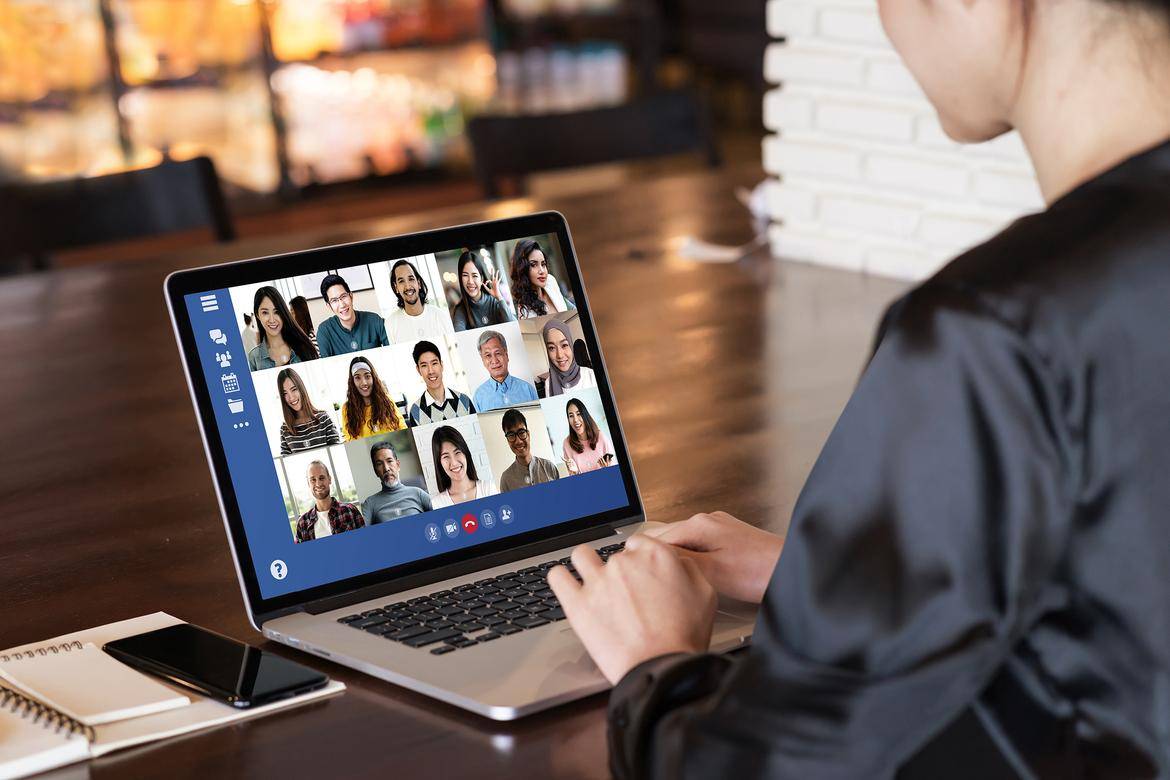Be aware of your students’ digital literacy.
It’s easy to get carried away with the unlimited possibilities offered by internet technologies. Asking learners to annotate on the shared screen, add their own picture, save this, upload that, go into breakout rooms, and so on…
Too much attention on technology might cause learners to get distracted. So, gradually introduce new tools and approaches, recycling them for a few distinct reasons before introducing a new one. When required, use demonstrations by sharing your screen or recording your screen.
On a variety of devices, good moderators should be conversant with the ‘learner perspective’ (what the learner sees). Then, if needed, modify lesson ideas and directions. Ensure that learners, whether they’re using a phone, tablet, or large-screen device, understand how to annotate, modify, and share documents.
Moderators should also consider the technical ability of learners. Learners with a mix of these abilities should be paired and grouped together so that no one is left behind.
Make participation a course goal.
Do you have the knowledge and time to convert a group of people into a team? That may mean the difference between an excellent and a terrible online Formation (training) .
Social connections before and after class are absent in an online course. As a result, learners may take longer to form connections. Learners, on the other hand, need an atmosphere in which they can express themselves and take chances.
The following are some basic techniques to increase engagement:
- Use icebreakers and personalization assignments to help students develop their own internet profile.
- demonstrate real interest in learners and subjects
- get to know your students and use what you’ve learned to your curriculum and duties
- inquire about students’ problems, questions, and recommendations (and respond to them)
- provide continuing, constructive feedback
- Introduce peer-to-peer feedback systems.
- Allow time in Training and activities for socialising and humour.
Change up your material.
Online learners may be captivated and maintained by a variety of information. Our eyes – and brains – glaze over when we see large chunks of text on a screen.
Moderators should provide learners with a variety of digital material while progressively introducing new tools and approaches.
Present a linguistic point, for example, in a written explanation or an introduction film. Then, utilise a recorded video or audio recap of a lecture. This may be accomplished via a series of interactive tasks, online conversations with learners, or forum postings.
Increase the frequency with which you check on your students’ progress.
When teaching online, it’s more difficult to understand body language. So, check in more regularly with learners on their progress and knowledge. Because concentration lapses more quickly online than in person, moderators must devote more time to this than they would in a regular classroom.
Learner polls and surveys may be beneficial. Games like ‘Stand Up If It’s True’ may provide a quick indication of a student’s comprehension. The moderator reads a statement in the game, and learners stand up if they agree with it.
Moderators should spend more time articulating the learning goals and results to assist learners grasp the logic behind an activity and keep them interested. This outlines how students will be evaluated.
It’s also crucial for students to recognise their own strengths and flaws. Automated scoring is provided through simple, self-managed activities such as gap fills and matching puzzles. These assist learners to reflect on their development.
Accept new methods of providing feedback.
Teachers often employ natural body language or basic gestures as signals to learners in the physical classroom. They may also provide one-on-one feedback to students in class.
A good moderator will aim to offer feedback to groups and individuals. During a lesson, identify people and offer feedback that is valuable to the whole group. Alternatively, use a private chat message to communicate with specific people.
Try using recorded audio or video feedback instead of sending a message or assigning a score. This adds a more human element. Inviting students to provide comments and ask questions creates a two-way, trusting interaction.
I am Jones Smith and I am here to share my experience and expertise in writing. I’ve been writing articles for different publications for more than 6 years. I have a varied range of interests and that’s why I love blogging about different topics. In my opinion, blogging is a lot like acting, and I consider writing blog posts as an acting job. I am an entrepreneur by heart and there is nothing big or small when it comes to starting a business.
